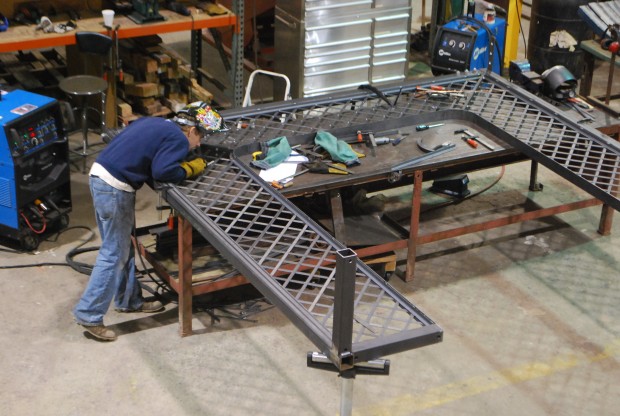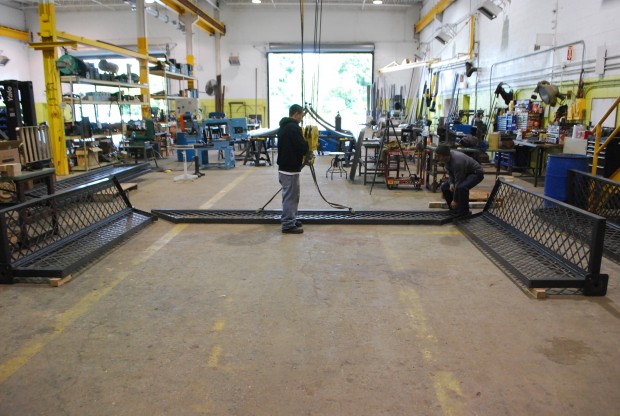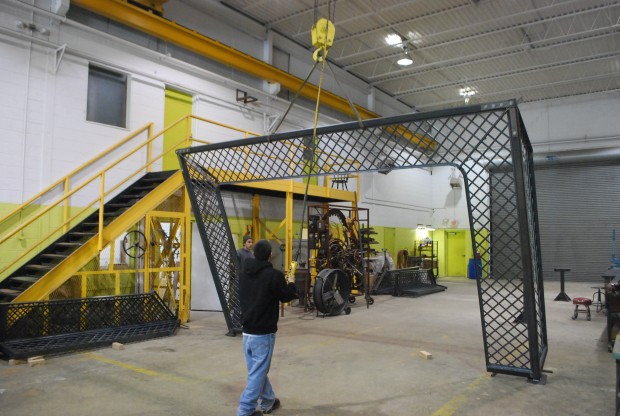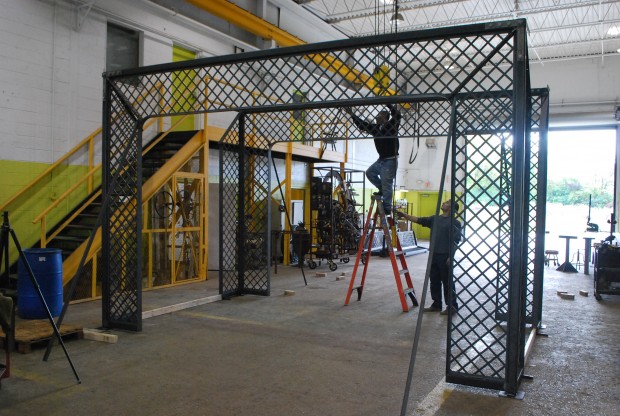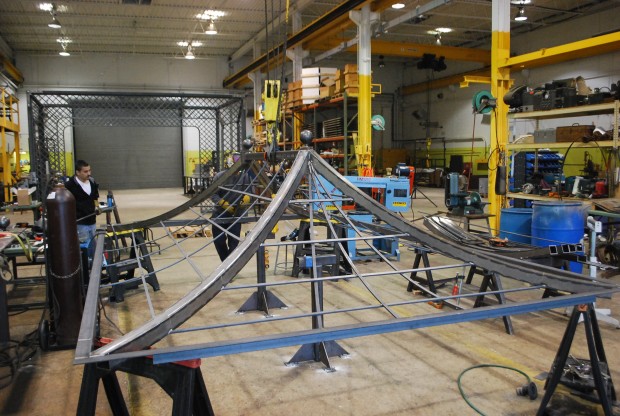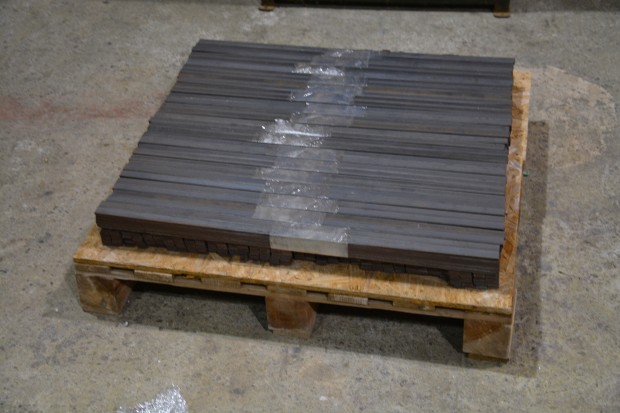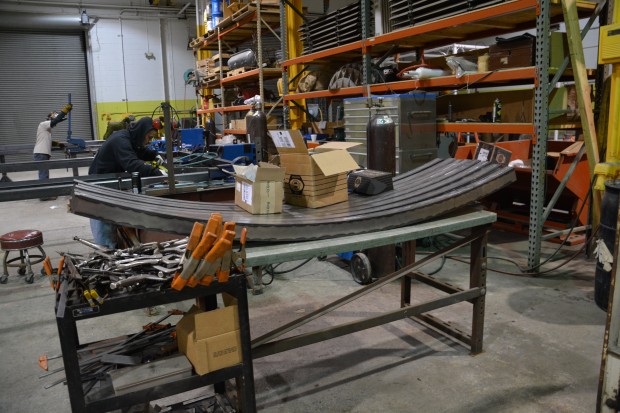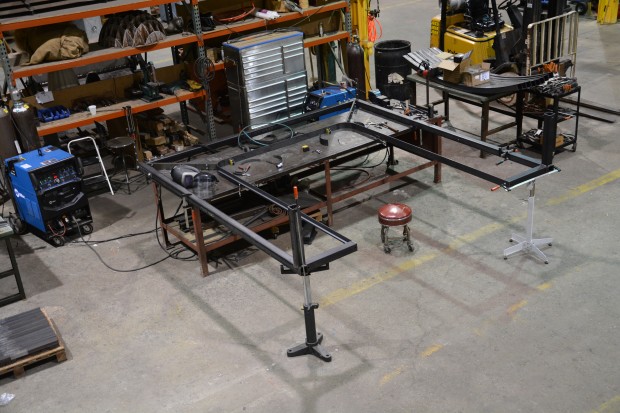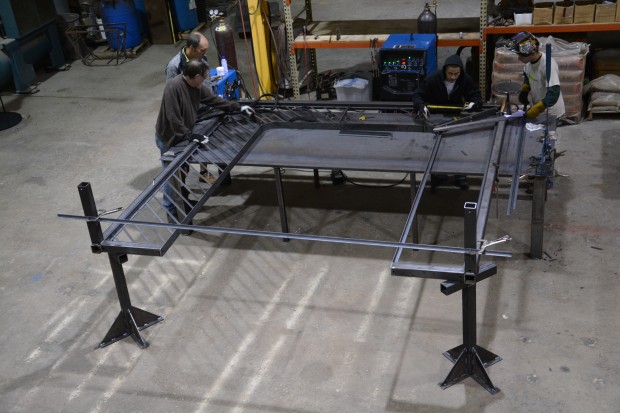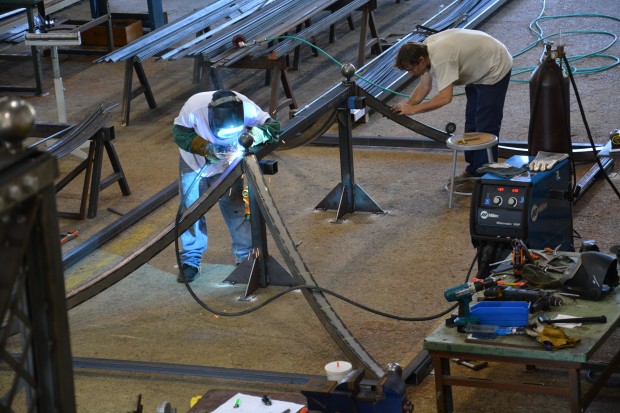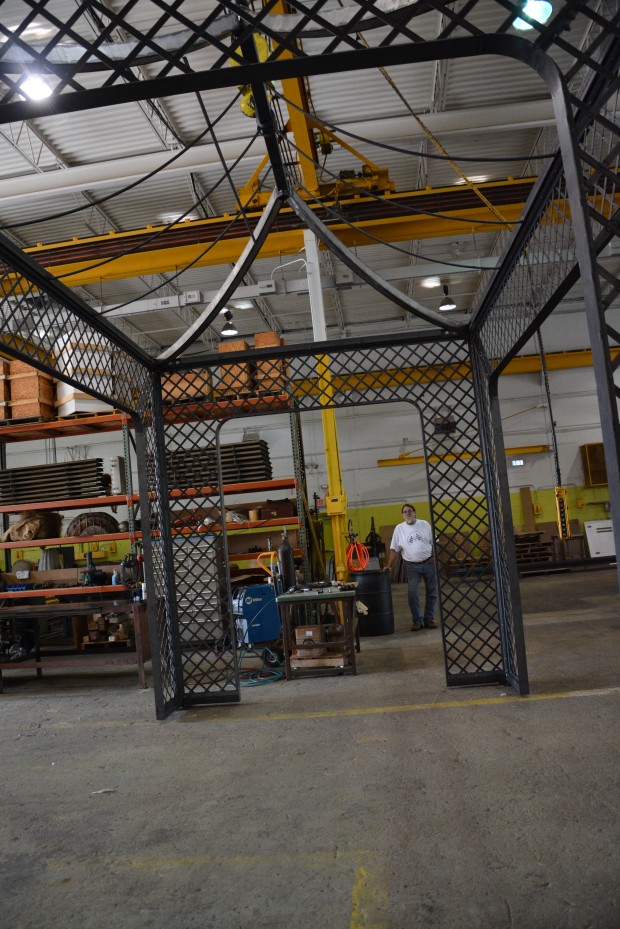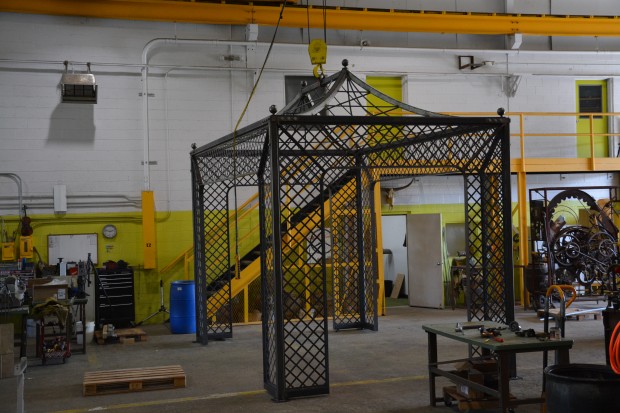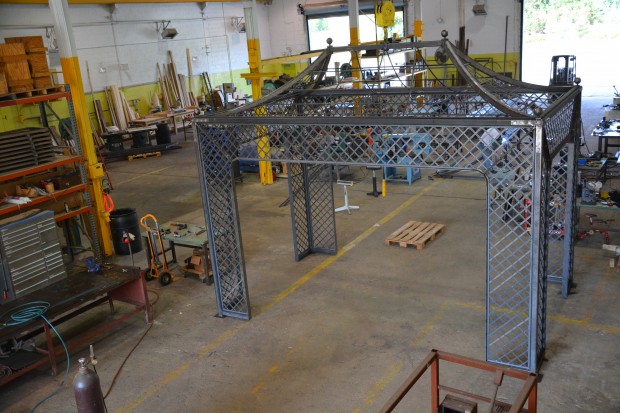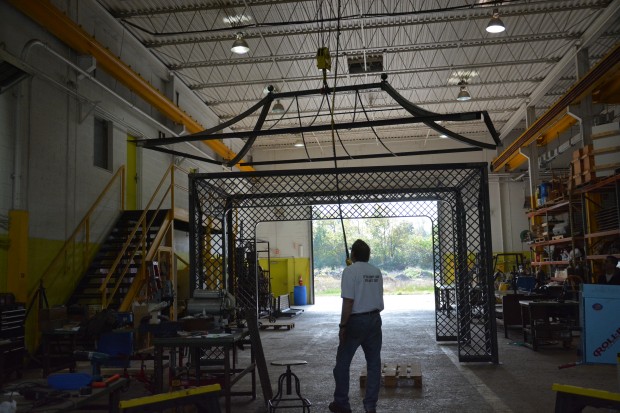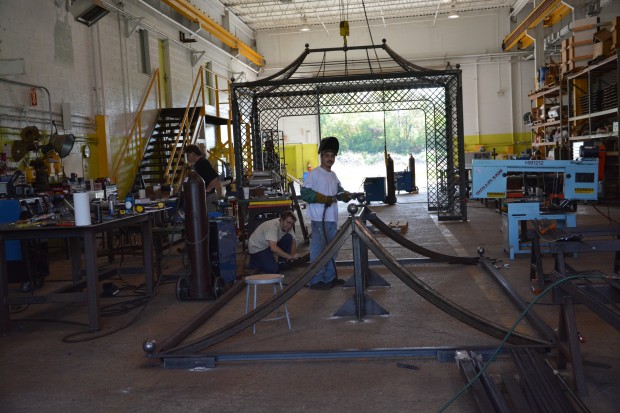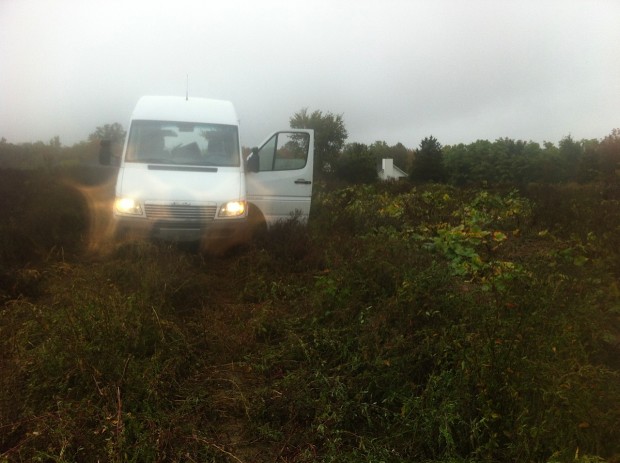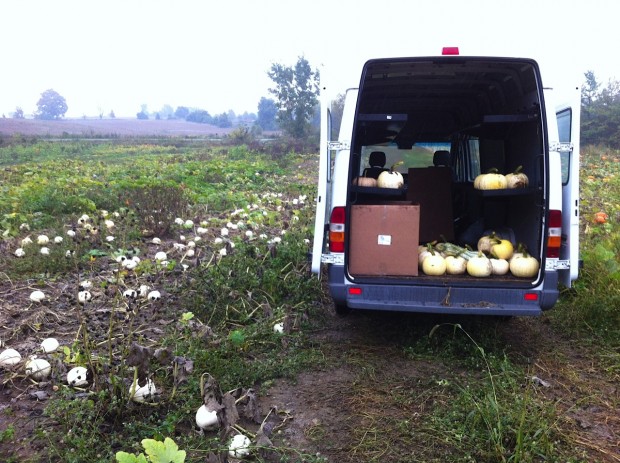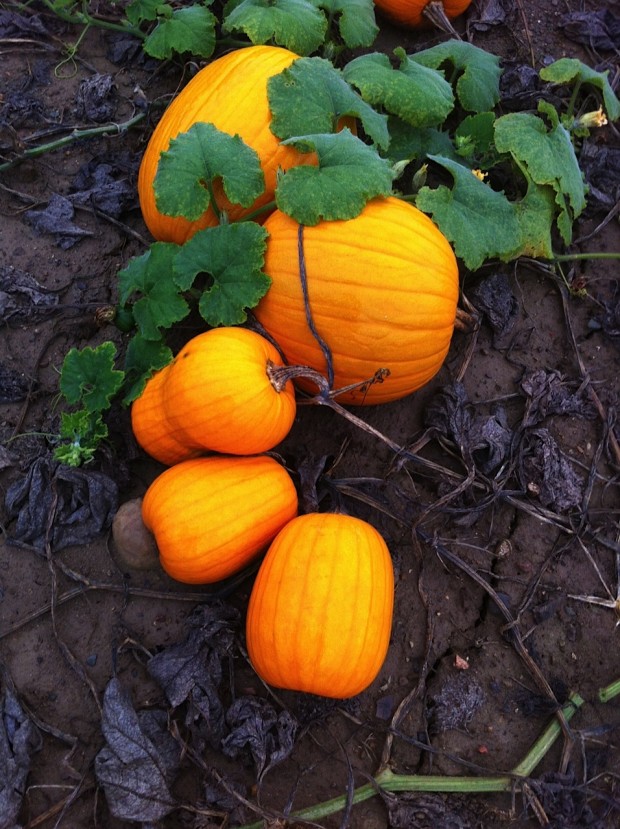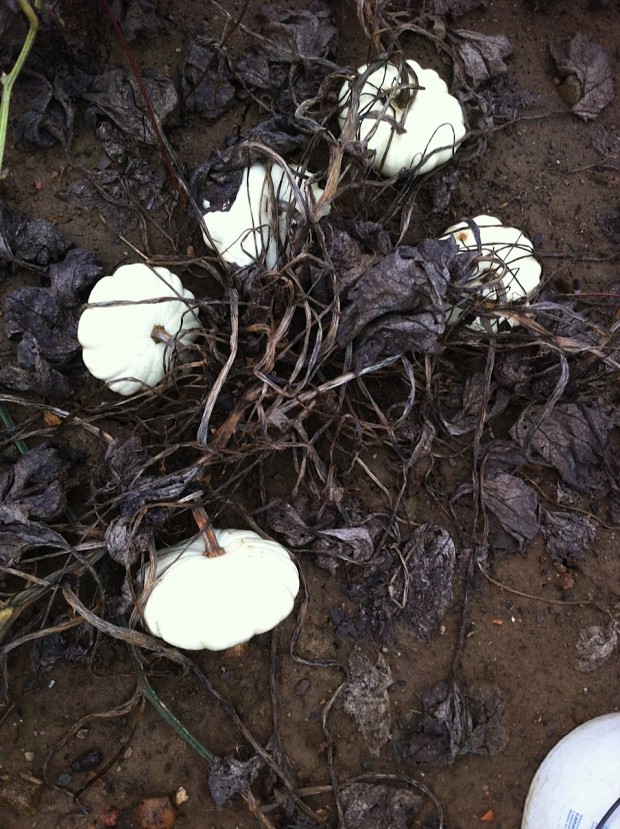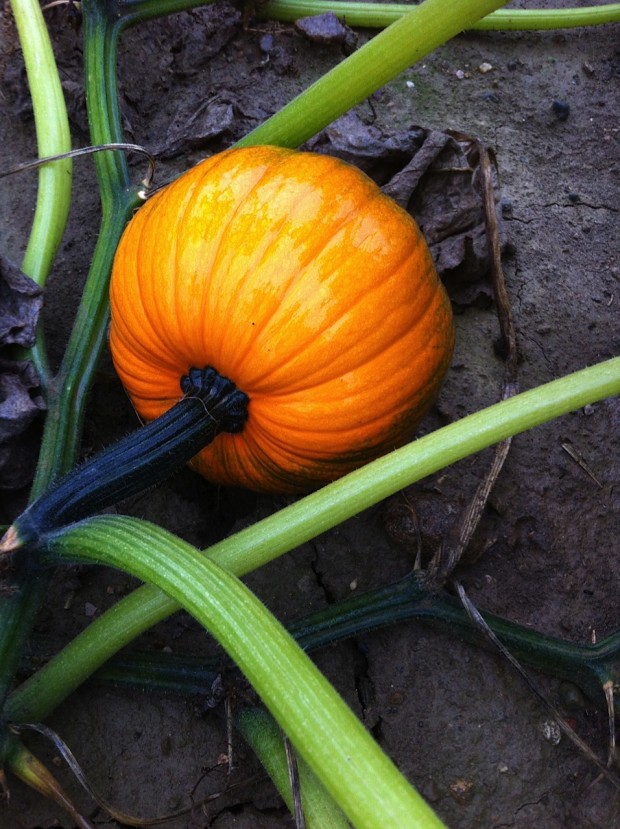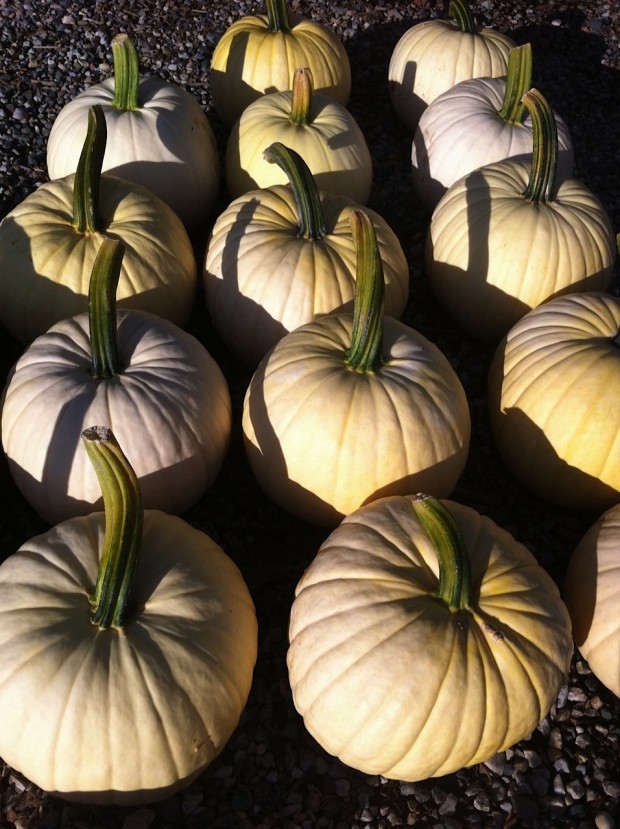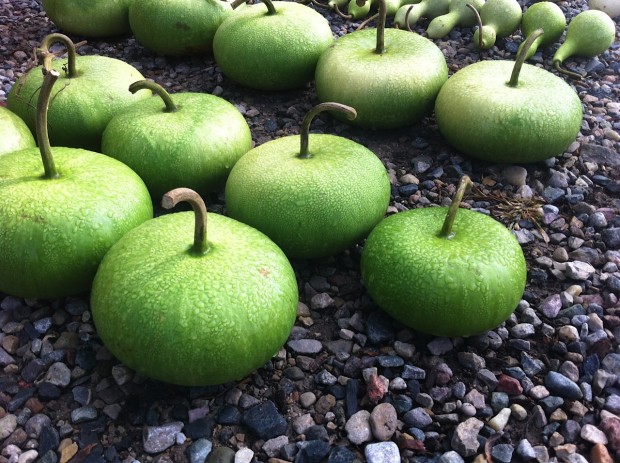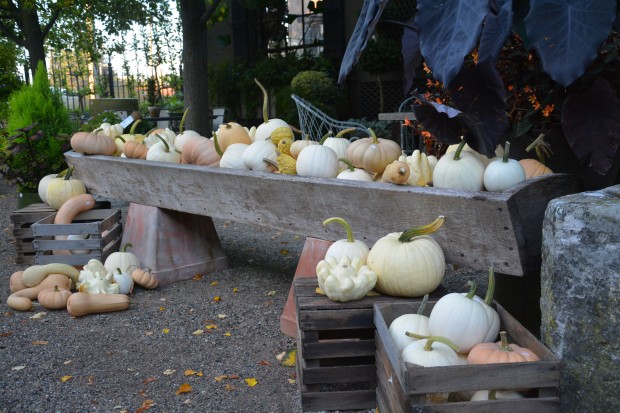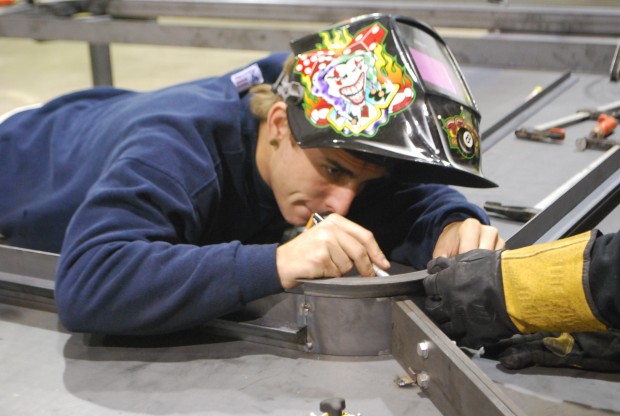
The pictures of the details of the construction of these massive pergolas is not just for our records. We will send a complete set of pictures to the contractor who will be charged with assembling the structures once they get to Florida. Though I have described this Branch project yesterday with few pictures and few words, the actual length of time and the attention to detail has been serious and long. At the risk of boring you beyond all belief, these pictures help to better tell the whole story.
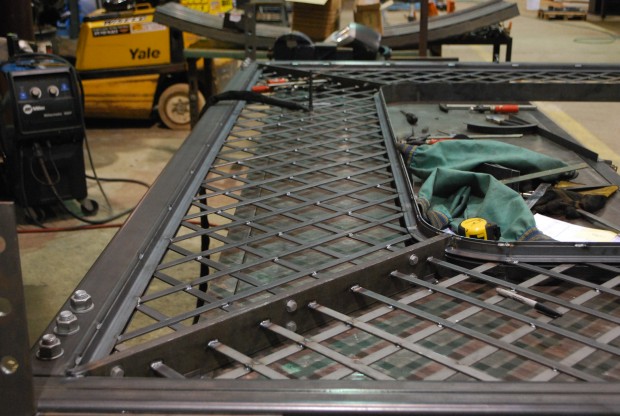 welded lattice
welded lattice
 Note the 2 by 4’s between the vertical panels. Great care was taken to square up the four posts before the roof would be dropped on.
Note the 2 by 4’s between the vertical panels. Great care was taken to square up the four posts before the roof would be dropped on.
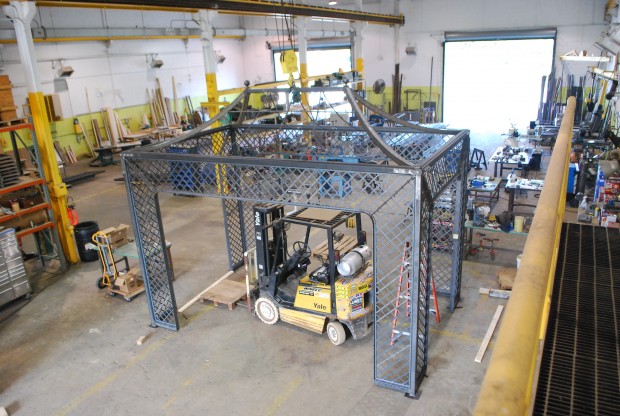
Big enough to house a forklift
finishing the roof
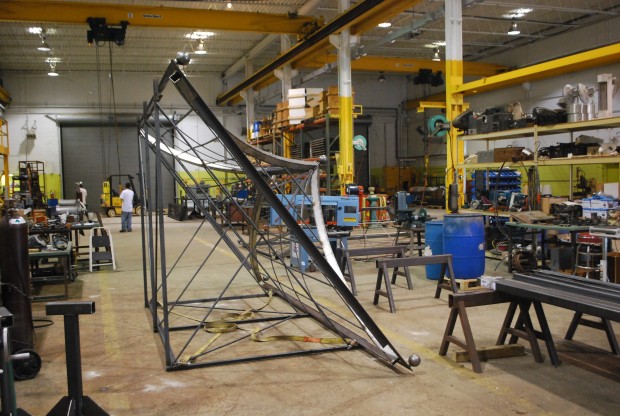 Once both pergolas were finished, cradle structures needed to be built for the roof structures. They are too wide to lay flat. The maximum width of a flatbed truck is 8.5 feet. We are over the legal transport dimension limit. Not a problem. Terry, Michael, Sal, Dave, Enrique, Owen, Scott, Steve, Geri, Dan, Max, and Buck worked together to bring a big idea for the landscape to life. Start to finish. Am I happy with the result? Truly? Yes.
Once both pergolas were finished, cradle structures needed to be built for the roof structures. They are too wide to lay flat. The maximum width of a flatbed truck is 8.5 feet. We are over the legal transport dimension limit. Not a problem. Terry, Michael, Sal, Dave, Enrique, Owen, Scott, Steve, Geri, Dan, Max, and Buck worked together to bring a big idea for the landscape to life. Start to finish. Am I happy with the result? Truly? Yes.
